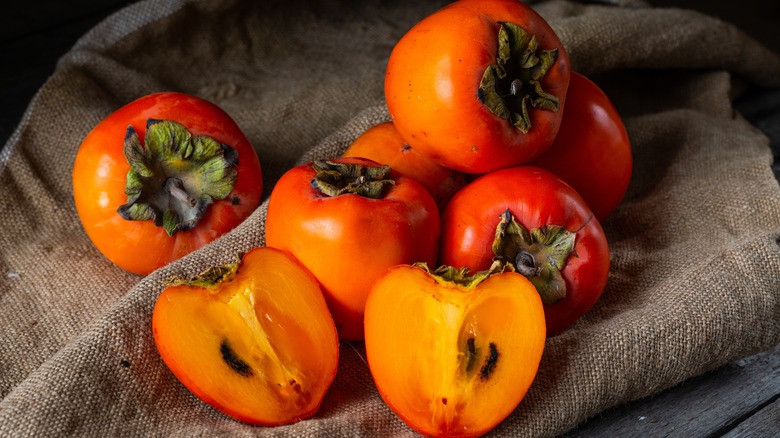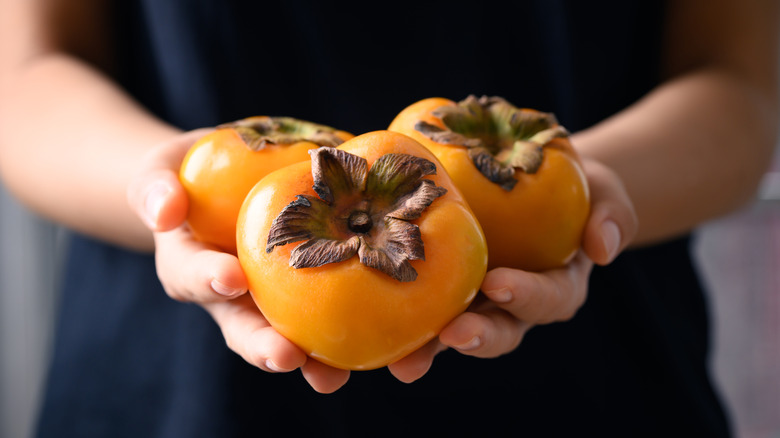The Simple Distinction Between Persimmons And Sharon Fruit
Amid America's pumpkin spice fanatics, persimmons are a prize of the fall season that are consistently overshadowed, year after year. However, due to the fruit's geographic roots, Eater says that persimmons are much more prominent in East Asian cultures — particularly during the fall. Countries like China, Japan, and Korea are among the largest persimmon producers on the globe (via Business Wire). There, they come in many varieties — all with their own unique sizes, flavors, and colors that range from yellow to a dark reddish-orange.
In the U.S., on the other hand, you'll more commonly find two varieties — the Japanese persimmons, also called Chinese or kaki persimmons, and the Sharon fruit. While they are both technically persimmons, they belong to two distinctly different groups. While persimmons are astringent, Sharon fruit is non-astringent — meaning that, even though the two may look similar, you should know that they can taste very, very different.
Persimmons compared to Sharon fruit
Compared to persimmons, Sharon fruit has a much more round and squat shape, almost like a tomato that's been slightly flattened. But, according to Specialty Produce, Sharon fruit also undergo a process called modified atmosphere packaging (MAP) that makes them taste very different than persimmons. The process removes the fruit's astringency by exposing it to a low oxygen, high carbon dioxide environment. The process also promotes natural ripening — making them ready to bite into the moment you buy them. So, Sharon fruit will have a rich sweet taste whether they're firm or fully ripe.
According to Eater, this is much less complicated than eating persimmons, which require an adequate amount to ripen before they're edible. That's because unripe persimmons contain a high level of tannins, a natural compound that makes them taste extremely sour. As they ripen, however, those compounds will break down, the skin will soften, and the persimmon will become nice and plump as it fills with a succulent, jelly-like center. At this point, it will be difficult not to bite into it. As Rachel Sullivan tells Eater, biting into one "is similar to eating an apple, but with a spicier flavor that's closer to a pumpkin, with some hints of cinnamon and nutmeg."

